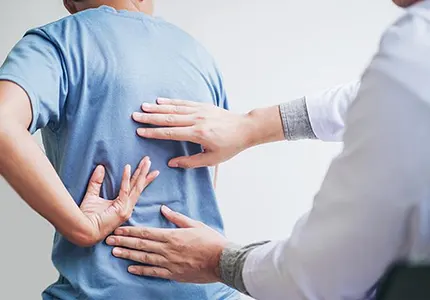Service Reviews
- A.B. / Google
"i was suffering from lumbar spinal stenosis symptoms for months tried all kinds of therapy and medicine din't work but Dr. Bengali fixed my back in less then 2 months.....
About Spinal Cord Stimulation
A spinal cord stimulator (SCS) is a small device that is implanted in the body to deliver mild electric currents to the spinal cord to help reduce pain. These electrical pulses modify nerve activity to prevent pain signals from reaching the brain. When conventional treatments or comprehensive procedures, such as back surgery, do not provide the relief you need, spinal cord stimulation may be a great alternative. Our seasoned medical professionals at Tricity Pain Associates are dedicated to helping men and women discover treatment solutions, even after other therapies have failed. Reach out to one of our Texas locations today to schedule a one-on-one consultation with one of our skilled physicians today. We look forward to serving you and providing the relief you've been longing for.

Ideal Candidates
Spinal cord stimulation is an alternative for patients whose neck or back pain has not been relieved by surgery or other treatments. Unlike many other forms of pain treatment, spinal cord stimulation involves a short trial period that usually lasts for a week. This is conducted with a temporary stimulator to determine whether or not spinal cord stimulation will provide you with adequate pain relief. A trial run is also necessary to determine the type of device that works best for you as there are several kinds of SCS systems. Spinal cord stimulators are not recommended for patients who have an infection, demand-type pacemaker, or bleeding disorders.
SCS Treatment
Once your trial has been completed and the appropriate spinal stimulator device has been selected, we will schedule your implant surgery. On the day of your procedure, we will have you lie down on your stomach as the areas in your spine are prepped. An SCS system consists of three components: the pulse generator, a lead wire, and a handheld remote to control the device. A live x-ray (fluoroscopy) will be used to guide where the SCS should be implanted. A small incision is made along the spine to implant the lead wire, and once that is placed, another small incision is created in the lower back area to place the generator. The wire is then connected to the generator, the system is tested, and then the incisions are sealed closed.
What to Expect?
After your surgery, you will be closely monitored for a short period, but in some cases, an overnight stay in a hospital may be necessary. Since general anesthesia is used during surgery, you will need about a day to recover and should refrain from driving and participating in strenuous activity. We also suggest that you arrange for a responsible adult to take you home. You may experience soreness, mild swelling, and discomfort at the incision sites, but this is normal and can be eased with over-the-counter pain medication. Prior to your release, your device will be programmed and we will provide you with detailed aftercare instructions to follow at home. Follow-up appointments are typically scheduled accordingly so we can monitor your healing progress.
Effective Pain Care
Have you undergone major back surgery or conservative pain therapies that have not provided the results you were hoping for? Spinal cord stimulation may be an excellent option for you. Call Tricity Pain Associates in Texas to set up a private consultation with our team. We can review your condition and medical history to see if spinal cord stimulation is right for you. Don't give up hope. We are here to help provide state-of-the-art care to safely and effectively reduce your pain so you can get back to doing the things you love.
